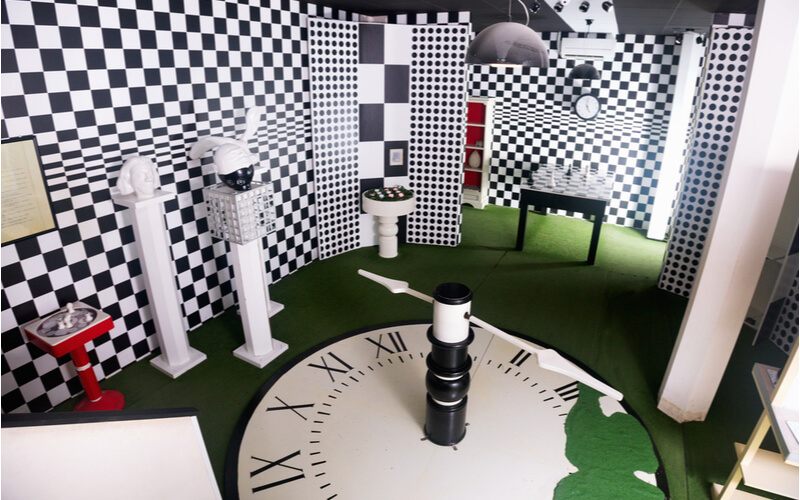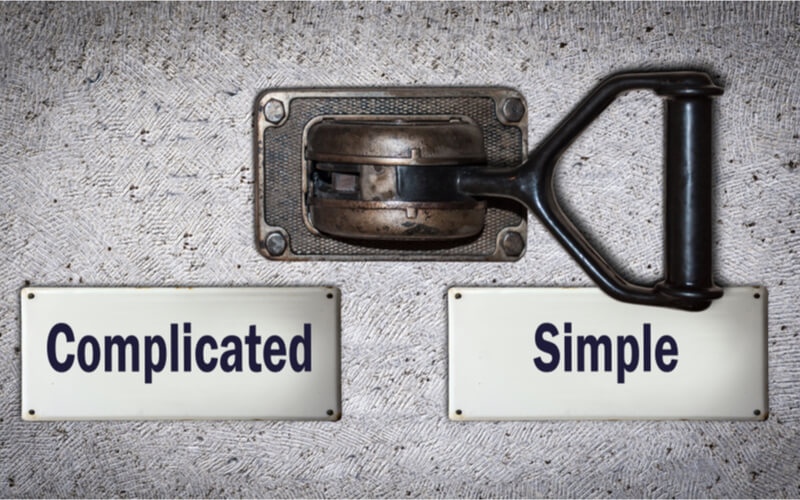Do not get overwhelmed by the possibilities and take stock first
Have you ever done one of these escape room experiences? Maybe you have done this with friends and family or with colleagues as part of team building. One thing all these experiences have in common is that in the very first moment there is a massive sensory overflow and significant confusion.

It is unclear where to start or how to organize yourself. Wanting to move to the cloud is quite similar. There are plenty of options to choose from and many opinions to listen to. So, how can we learn from the escape room experience for our cloud journey? Fortunately, those who have come before us and have vast experience with such things have lots of lessons to share. Let’s look at the top 10 tips for mastering escape rooms (there are many lists to choose from, I have found this one quite helpful: https://youtu.be/zwgaTYOx0RI)
- Think simple
- Searching
- Organize your stuff
- Focus on stops
- Team roles
- Lock types
- Code types
- Written clues
- Look for patterns
- Your guide is your friend
Can we apply this guidance also to the planning and execution of your cloud journey? Let’s try.
Think Simple
How can we think simple if the cloud offers so many different options just when our own application ecosystem is historically grown and overly complex? Is this challenge not the opposite of “simple”?

I do believe it is simple if you look at it from the value perspective. The reason why it appears complex is that usually the cloud discussion starts from a technology perspective. If you look at it from a business and value perspective the picture becomes way simpler. Work with business owners and enterprise architects to understand which business processes and business services deliver direct consumer value and differentiation from the competition. This drives the priorities of where to start and where the outcome/investment ratio is best. This is not a cost saving approach but let’s face it: the customer value is not driven by cost saving but by value maximation. Surely this includes the price point but the higher the value and the competitiveness of the product, the less important the price element is.
Searching
Searching activities in the escape room are very similar to taking stock in the business world. You need to understand the baseline. What is there, what is needed, what fulfills which function? How are things connected and dependent on each other?
You would be surprised how often I get told tales of failed cloud migrations that sound like this:
“We wanted to move application A with its database to the cloud and had everything prepared.. The on-premise environment had many pain points, and upkeep costs were high, so moving to cloud was a business imperative. We were ready to execute the plan. However, just at the last minute we identified two other applications that were dependent on the application and database. As a result, we had to postpone migration till we resolve the dependencies.”
Not knowing your existing estate in detail is fatal. Now, who would admit to not knowing about the existing estate?

There are CMDBs and architecture databases in place and how would the current system work if there was no clear understanding of it? There is a split view on this. IT management often claims to have a great and current view and documentation whereas as soon as you go one or two levels down you see a lot of shrugging. The reality is that the view on the current environment is a good enough approximation to keep things going.
It is not good enough though to understand all dependencies and take decisions where to go.
You need to start searching or – in cloud terms – re-discover your existing application and technology landscape including dependencies. This will give you that much-needed foundation for decisions and enable swift migration to the cloud.
Organize your Stuff
Discovery gives you the insights into the current state. To drive decisions, the next step is assessing the information and come up with a structure to drive the migration; or in escape room terminology: organize your stuff.
You will discuss the 7Rs of cloudification (sometimes it is just 6 Rs, search the internet for more information), low-hanging fruits, move groups and many other things. This approach helps you to combine knowledge gained in discovery with options for cloud migration and business priorities of your enterprise.
What you also learn in the escape room is that transparency is the key to success. To avoid duplicate work or conflicting decisions (e.g., product choice), you need to create transparency and guardrails. See the list of blog posts on cloud strategy to explore this area in more detail.
Focus on Stops
What are the tough nuts to crack? Which are areas that involve the biggest technical obstacles or maybe even the most stubborn individuals? Is there an overwhelming feeling of theses obstacles which look like they never will be solved? Never get discouraged. As the escape room tells you, work backward from what is stopping you or what you are trying to achieve. Sometimes the initial issue is not even on the route to success. If it is, understand it and work in small steps. Achieve small victories and get closer to the target one step at a time. If you think of it in an agile way, which I recommend, break it up, create a backlog based on the user story and tackle it as a team.
Team Roles
If you have ever done team training in the same way as in an escape room, you can let roles evolve naturally. You will recognize that different people have different comfort zones, fun zones and different expectation corridors. While in an exercise to help people understand themselves and the team members better, this evolutionary approach might be wanted in a cloud migration as much as in an escape room; this defines the purpose of achieving the target the quickest in the most efficient way.

Team roles serve a dual purpose. First, they define responsibilities and, second, they also (help) define the communication within the team. In a migration project, this is critical to work together to achieve a shared goal.
Define your roles and hold people accountable, create a culture of ownership.
Lock Types
This and the next section are all about being prepared. Knowing the types of locks that could be found in an escape room and ways to solve them. It saves a lot of time if you are aware that on a four digit lock, you only need three digits because trying out the ten options for the fourth digit takes no time at all.
In the same way, make yourself and your team familiar with the cloud options. This includes technologies, journeys, learning from other’s failures, providers, etc. You will need this to be able to come up with the right decisions and to face providers on an equal level.
Code Types
So, knowing about cloud is important. But what about software architecture? Let’s face it, the value of Lift & Shift is limited. But what do you want to do? Remember the 7Rs mentioned earlier. There are many options for moving from a monolithic technical debt into the direction of a more cloud native software architecture. Also, there are different steps you can take and different grades of cloud-native you could aim for.
The range spans from something like simple containerization (highly limited value) to a full-blown 12 factor application architecture based on microservices and serverless, which usually results in a total re-architecture approach.
Learn, ask, understand, and keep on challenging the team to identify the best way forward for your business.
Written Clues
Indeed, another form of clues in an escape room but a difficult one to find an analogy for, I admit. Let’s focus on the word written and agree that if you lacked current documentation before, this is the time to update or create it.
Measurement of success, future changes, budget planning and many more things you want or must do are dependent on current and accurate documentation. Do not forget this in the adrenalin rush of seeing the first successful migrations and make it a mandatory requirement in every sprint.

Look for Patterns
Obvious, isn’t it? When discovering your application landscape, you look for patterns. As obvious as it might be, we often do miss the forest for the trees. And the same thing happens with applications. You really need to take a step back, involve someone with a different perspective and discover patterns.
Why is pattern recognition so important? It will help you create move groups, identify specific areas of technical debt that are more harmful than previously imagined, help you decide on a direction, just to name a few.
Another way of finding patterns is through tools. At Hexaware, we use a lot of discovery tools to automate the identification of patterns.
The Guide is your Friend
You are not alone and limited to the team without outside input and help.
The fun in doing escape rooms partially is to make mistakes yourself and find out things that other teams have found out before. While starting and executing your cloud journey, there is no fun in that. You can bring the best to solve the puzzles. Bring a locksmith, a code breaker, and a master prison escapist to your cloud journey. Get help from partners with experience (especially knowing where others failed before), accelerators with a track record.
These partners will be your guide, and this is where the story connects – The Guide is your Friend.

Solving the Escape Room and getting the Cloud Journey going
There is no need to get stuck in an escape room or to get lost on your journey to the cloud. The 10 tips will make sure you can enjoy the escape room experience. Applied to real life they will help you escape the legacy room, identify obstacles, patterns, and develop structures to take the whole team out to turn your journey into your cloud success story.
And remember, a good guide may be the game changer and ensure a successful, and enjoyable experience.



















